No products in the cart.
We recently shared some care information for the Syngonium chiapense, but today we will take a closer look at caring for the Syngonium macrophyllum Frosted Heart. As the Chiapense, the Frosted Heart is an excellent climber and belongs to the Arrowhead plant genus.
More About Syngonium Macrophyllum’ Frosted Heart’
The foliage of the Syngonium macrophyllum Frosted Heart is thicker and also goes by the name Ice Frost. The veining is a frosty silverfish sheen color. The color looks iridescent with a heart shape.
Still, when you buy it is in a juvenile form, and you would not think it is vines or climb. If you want it to vine, you can provide it with space with a moss pole or a trellis to climb. Alternatively, you can let it grow in hanging baskets with the vines hanging over the side.
Furthermore, it is native to Southern Mexico through to Ecuador and thrives in the shade of trees. The plant has cordate leaves with some texture and belongs to the Araceae family. Another worthy thing to mention is that when ingested, it is poisonous and best kept away from children and pets.
Syngonium’ Frosted Heart’ Care Guide
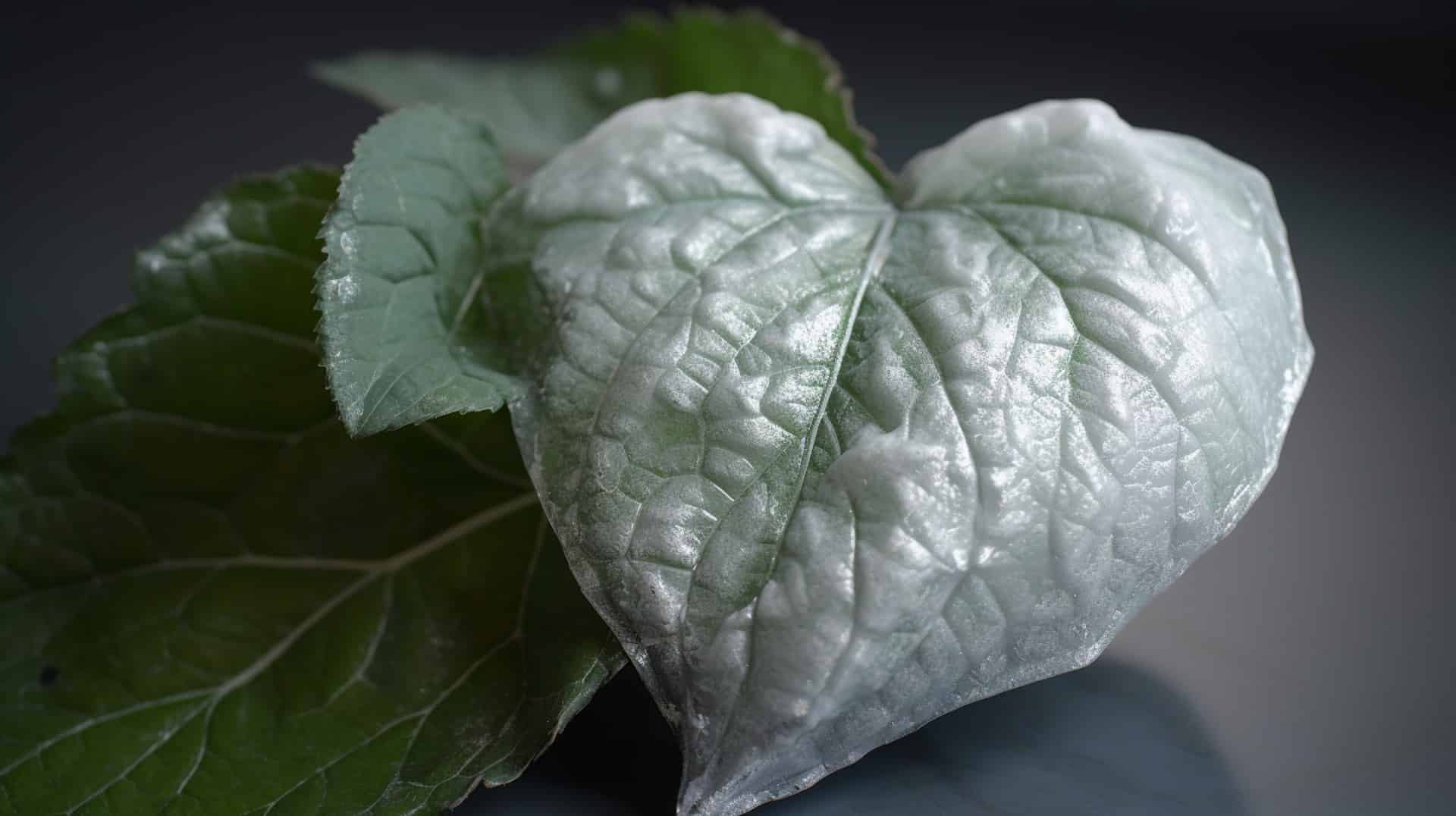
The care needed for Syngonium macrophyllum Frosted Heart is flexible, but as with any tropical indoor plant genus, it needs enough light, water, and the right environment to grow.
The Best Soil For Syngonium Macrophyllum Frosted Heart
A critical part of any plant care is the soil. The Frosted Heart thrives in light soil that drains well. Hence, well-draining soil works best for these epiphytes. You can use indoor potting soil filled with coco coir and perlite.
Bright Indirect Light is Better Than Direct Sun
When it comes to the best light source, it is a forgiving plant. While it can grow in low to medium light, it does best in bright indirect light. Like most tropical plants, it prefers filtered or dappled light, as direct sunlight can harm your plant.
It still needs some morning sun with shade in the afternoon. Growing Arrowhead vines with space light help move them to the front lines close to a window with sheer curtains.
Watering Your Syngonium Macrophyllum Frosted Heart
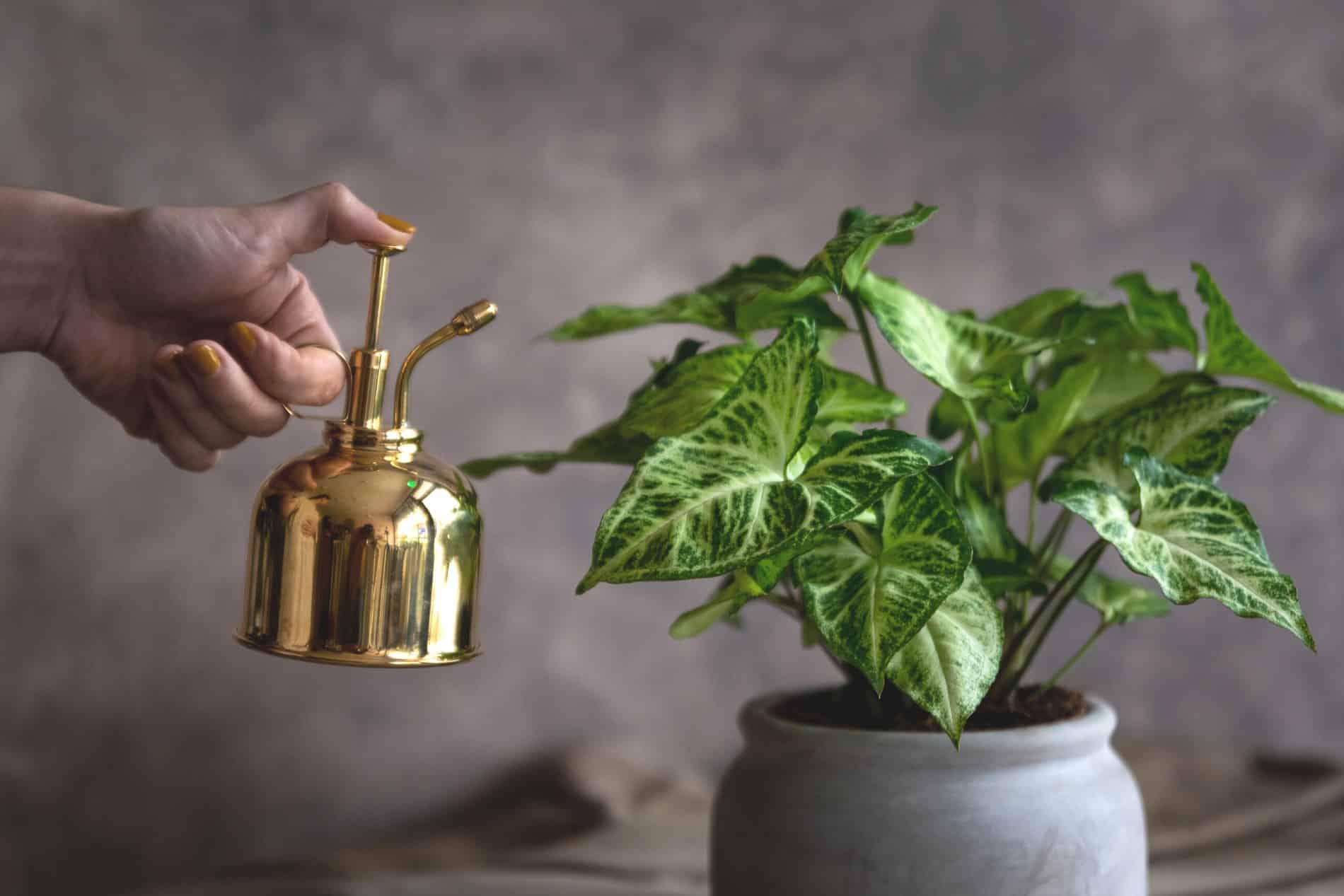
As with most other plants in the tropical collection, your Arrowhead vines do not tolerate much water. But it can also wilt then, not receiving enough water.
So watering needs to be done well, allowing excess water to drain from the holes in the pot and be removed from the catch saucer. Doing this helps to prevent root rot. We recommend doing the finger test to check the soil moisture.
You can check the top two inches to feel if it is dry before watering. You may find water often in summer (growing season) and less in winter months. When you notice the foliage turning yellow or drooping, it is a sign of overwatering or the soil is too heavy.
Temperatures & Humidity
Your plant is not cold or frost-hardy and can flourish at a household temperature as it can handle some drafts near a window. Neither does it need higher humidity and is happy with normal humidity levels. Still, if the air is dry and you have excessive heat, we recommend keeping an eye on the foliage and grouping it with other plants to provide some added moisture.
Repotting and Fertilizing Syngonium Species
The Arrowhead vines can thrive without fertilizer but can benefit from it to survive and grow. Therefore, we recommend providing it with fresh potting when repotting with some slow-release fertilizer and worm castings added for nutrients.
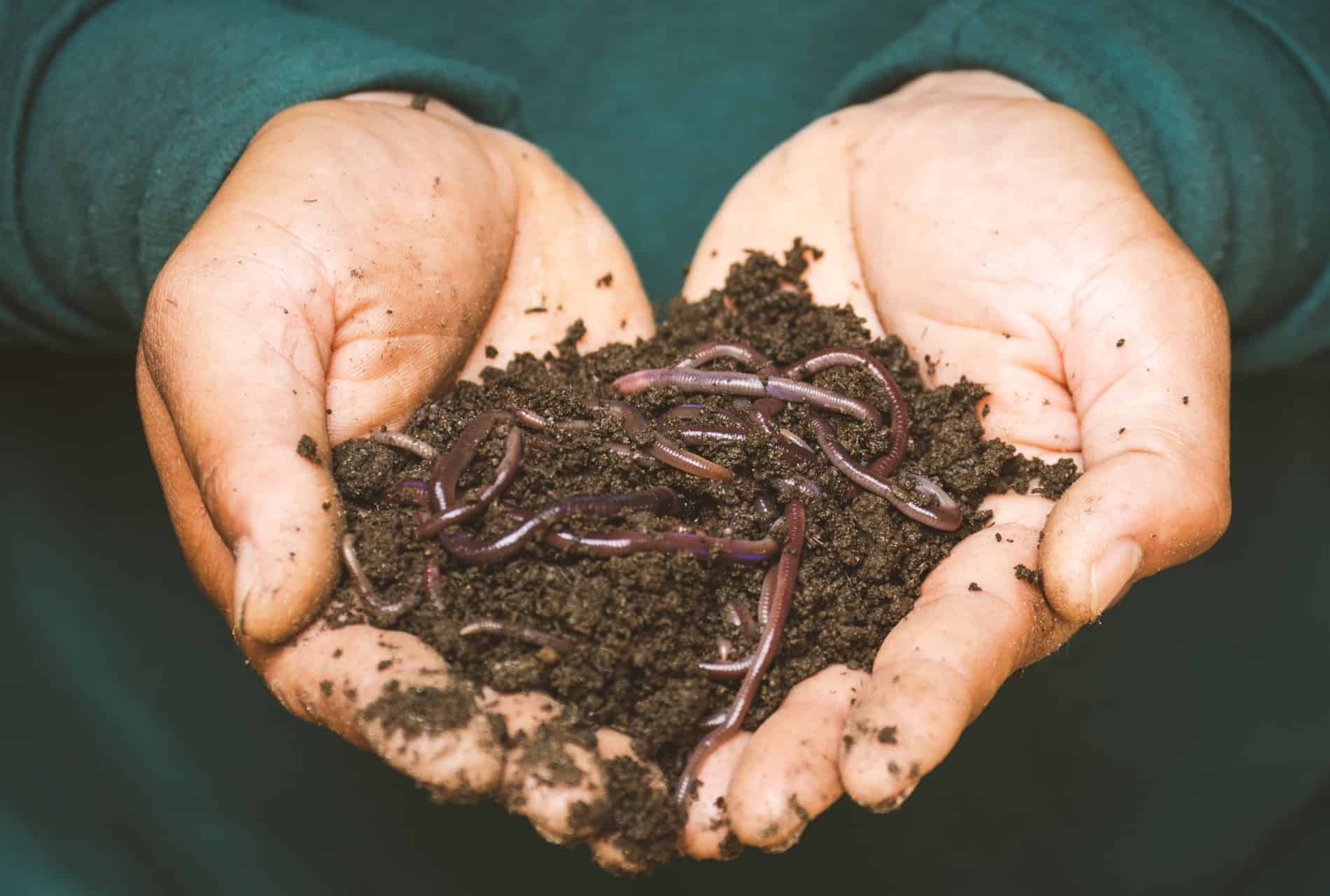
Alternatively, you can use a diluted balanced fertilizer once a month but be careful not to over-fertilize. Doing this will result in leaf burn and can build up in the soil. However, the growth of this plant is not fast, and you need not fuss to repot it every year.
When you notice the roots encircling the pot, you can repot it in size larger, providing enough room for the roots to grow.
Pruning Your Syngonium Macrophyllum Frosted Heart
To encourage bushy development for your Syngonium macrophyllum Frosted Heart, it helps to prune it. You can trim away the dead vegetation or diseased ones.
Removing the leaves will direct the energy toward new development; if you prefer to keep your Frosted Heart manageable, remove vines about six to eight inches of the soil line. You can take these vines to reproduce more plants outdoors.
Lastly, you can pinch the tips throughout the year.
Propagating Frosted Heart
As mentioned, with pruning, you can take the stem cuttings to propagate in water or a potting medium. For example, you can use a clean glass container with water and remove the bottom leaves to place the cut end into the water.

Or you can use sphagnum moss with perlite by keeping it damp with high humidity. Then place a clear plastic bag over it, and once it roots, you can remove the bag and transplant it into some soil.
Propagation helps choose a mature plant that grows aerial roots or has exposed maturing points. You can remove it with sterilized scissors cutting below a leaf node. Whether you reproduce in water or soil, it helps to keep it in bright indirect light.
Syngonium Varieties
You can find some gorgeous rare Arrowhead vines to grow in the home. So, choose one from the list to place close to your Frosted Heart.
Syngonium’ Neon Robusta’
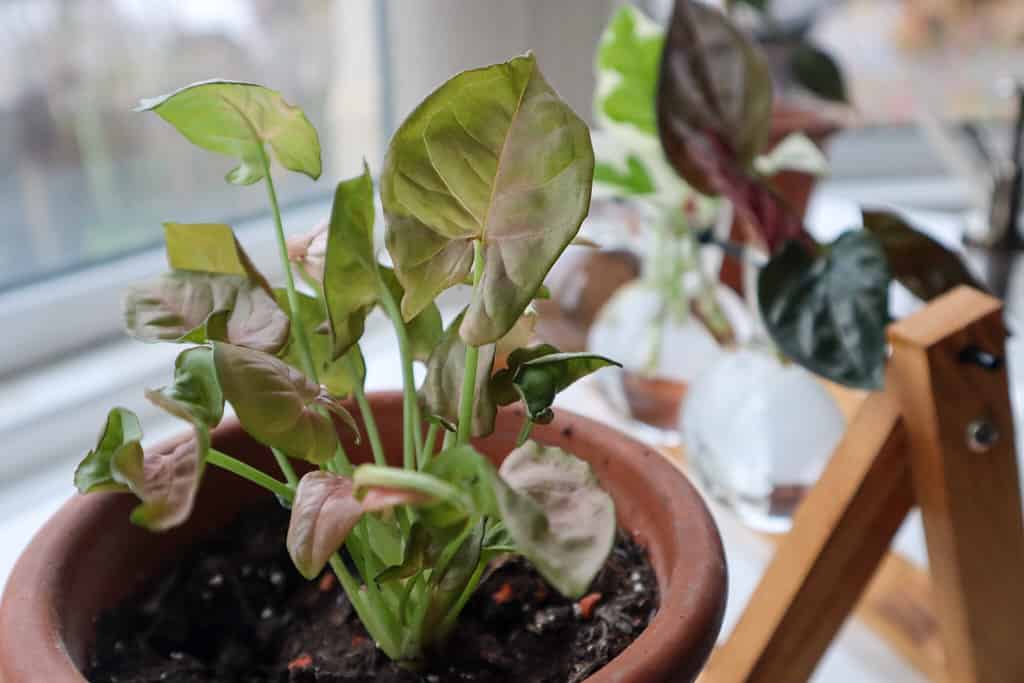 Syngonium’ Neon Robusta’ @flickr
Syngonium’ Neon Robusta’ @flickr
The Pink Syngonium is a must-have with its gorgeous splash of color. Green hints of pink along the veins dominate the dusky pink hue with a metallic sheen. The undersides of the leaves are pink. It is an excellent climber.
Syngonium’ Snow White’
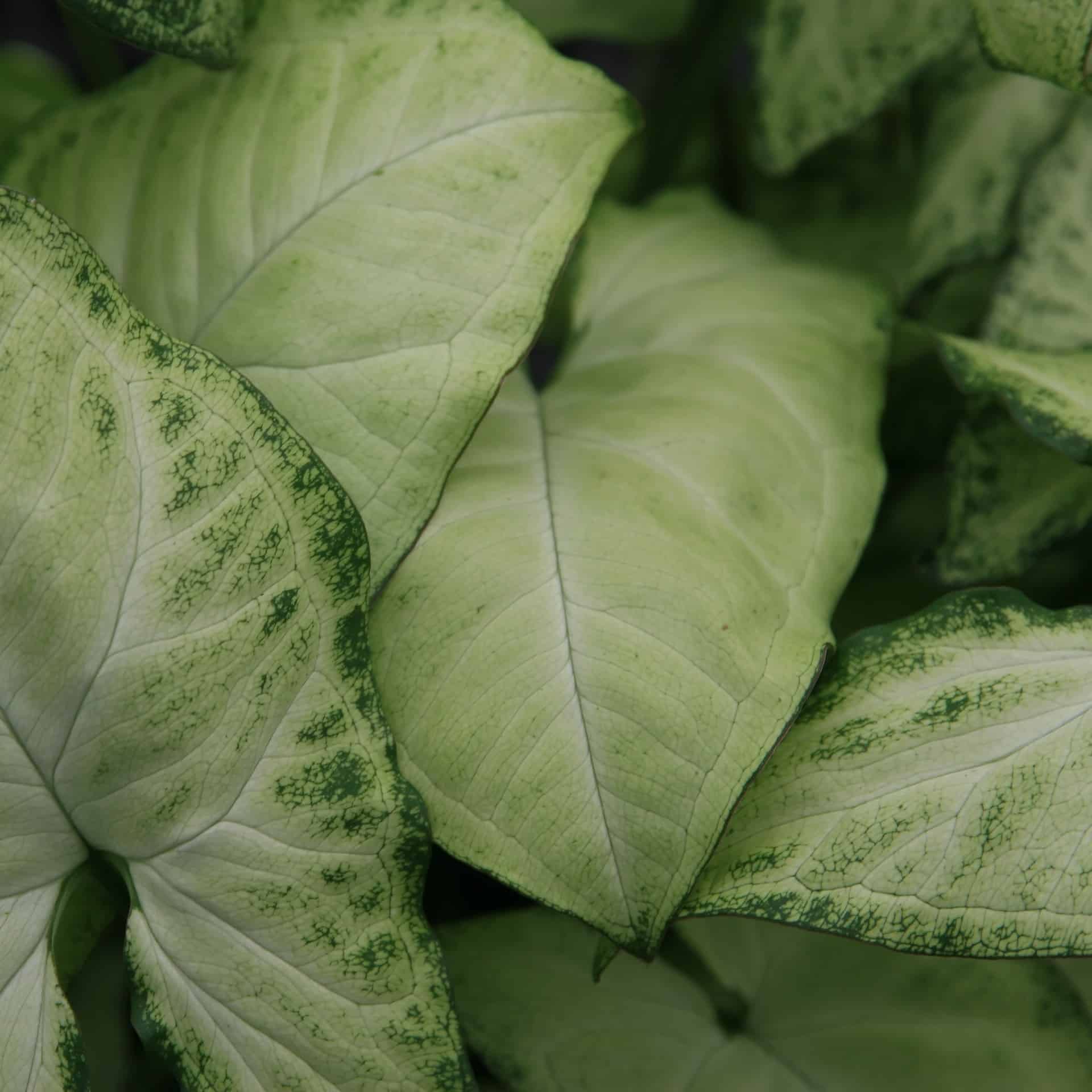
For a non-trailing Syngonium, the Snow White has a compact yet charming appearance. The arrow-shaped leaves are variegated with a speckled appearance with green and white dusting.
Syngonium’ Strawberry Cream’

The Strawberry Cream is an irresistible plant that reminds you of a milkshake. Yet it is only the young leaves that have the pink color. As it matures, it becomes green with hints of pink.
Syngonium’ Frosted Heart’ Common Diseases And Pests
Most species in the Syngonium genus are resistant to pests, but it can still become the home of insects. Some problems are aphids, scale, mealybugs, and aphids. Still, these can result when your plant is unhealthy. You can spritz some neem oil on the affected parts of the plant.
One thing you must maintain with your Syngonium is having a good watering schedule and allowing excess water to drain out of the pot. These plants tend to get root rot quickly. A note is to keep an eye on your plant; if it wilts or has leaf discoloration, check the moisture in the potting medium.
We recommend removing your plant to check the root system, and if it is soft, remove them and save what you can. Freshen a sterilized container and fill it with the fresh potting medium before you plant your Arrowhead vine.
Frequently Asked Questions
While many plant parents advise you to mist your Arrowhead vines daily, it can help provide them with the moisture it needs. But we recommend you place your plant on a pebble tray with water, but it should not touch the pot’s base. Misting the leaves can result in bacterial growth if the leaves do not dry out before nightfall.
Suppose you want your Syngonium macrophyllum Frosted Heart to grow bushy instead of vining. In that case, we recommend cutting the vines back to the base about six to eight inches and ensuring to remove the tips of the vines grow throughout the year.
While your plant can survive in low light, it prefers bright indirect sunlight to grow faster.
If you want to get your hands on the Syngonium macrophyllum Frosted Heart, you can find it here with us at Plantly. However, you need not leave your home to visit a nursery, as we will deliver your plant to your door.
Whether you want to buy, sell, or simply reach out to other plant enthusiasts, Plantly is the right place to be!


